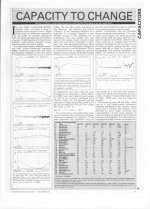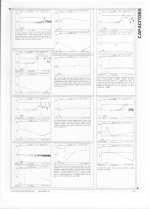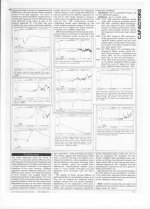Well you have more than the stocking Dist. in the USA . Could be an interesting MC headamp. Say low gain of 10 to 20 ?
I'd do 40dB for MC. I'm making a board to repeat Gerhard's 20 in parallel, 10 and 10 for diff-in/diff-out as an option. Should do .25nV not .22nV, anything around .3nV or so is good enough for me.
Yes, I'm using here 20 opamps in parallel ( 10 pairs ADA4898) for noise measurements.
Delivers 220 pV/sqrt Hz from a few Hz to 1MHz.
Blue line: input shorted,
brown line = noise of 60 Ohm = 1nV/sqrt Hz
green = noise of 4 Sanyo Eneloop NiMH AA in series
2nd pic is a 2/3AA Lithium Cell.
Probably the Eneloops are even better. It's time to update
my second preamp so that I can use the cross correlation
capability of the analyzer, that should bring 25 dB more.
I wanted to try NiCd, but I cannot buy them here any more.
Gerhard
Beautiful plots Gerhard! at .2nV resolution with no interferors you should have a good platform for contact potential/wire "distortion" measurement.
I'd do 40dB for MC. I'm making a board to repeat Gerhard's 20 in parallel, 10 and 10 for diff-in/diff-out as an option. Should do .25nV not .22nV, anything around .3nV or so is good enough for me.
Blowchip .....?
Blowchip .....?
Research tool, too much gain. I expect two of these amps at say 40dB (net 46dB) might make a decent diff-in / diff-out MC head amp but not earth-shattering low noise.
Back in 1982 Walt and I made an AD624 pre that I used on an old Pioneer TT and $15 Grado cart, decent sound. The article is in the ADI achives somewhere.
Last edited:
Yes, I'm using here 20 opamps in parallel ( 10 pairs ADA4898) for noise measurements.
Delivers 220 pV/sqrt Hz from a few Hz to 1MHz.
Blue line: input shorted,
brown line = noise of 60 Ohm = 1nV/sqrt Hz
green = noise of 4 Sanyo Eneloop NiMH AA in series
2nd pic is a 2/3AA Lithium Cell.
Gerhard
Really impressive. Why is there no 1/f noise corner? Are the other noise mechanisms dominating?
I got to about the same place using an old Geoformer. The distortion probably is higher. The upper limit is around 10 KHz.
Yamaha used the paralleled opamp trick in one of their premium tuners to get the noise down. Using a dual opamp on a common substrate they just paralleled the connections and it seems to have worked well in volume production.
I got to about the same place using an old Geoformer. The distortion probably is higher. The upper limit is around 10 KHz.
Transformer feedback can get down to .05nV or so at ~5Hz - 100kHz BW, at least I've seen at least one built and measured..
Last edited:
The last DARPA guy I spoke to me explained how they proved that it was impossible to store antimatter in a confinement bottle. I told him to google CERN ALPHA.I'll put you in touch with my guy that did this stuff on DARPA grants with femto-second laser pulses. If I told you what he said he could measure you would not believe me and he would have to kill me.
OTOH I have held a 9 digit digital caliper in my hand ~$2000.
I think they'e down to atto-pulses now, I'm not sure if they are doing that in this neck of the woods, or if it was elsewhere. Might have been part of the LEAF experiments.
It's at least 5 years ago, I think the company was RTC (?). I'd have to look.
Jan
Thank you.
jn
Really impressive. Why is there no 1/f noise corner?
Linear frequency axis, 0 - 1MHz, --> no chance to see 1/f LF corner. That measurement is not for audio purposes.
Yes, I'm using here 20 opamps in parallel ( 10 pairs ADA4898) for noise measurements. Delivers 220 pV/sqrt Hz from a few Hz to 1MHz.
And, according to the data sheet, 11pA/rtHz input noise current. Meaning that you are limited to <7ohm source impedance, to be able to ignore the input current noise component. Pretty low, even for a moving coil cartridge.
And, according to the data sheet, 11pA/rtHz input noise current. Meaning that you are limited to <7ohm source impedance, to be able to ignore the input current noise component. Pretty low, even for a moving coil cartridge.
That's why these are research tools, 7 Ohms is .35nV by itself and there already are diminishing returns.
Another experiment for doubters. Take a coil of very thin wire 50 Ohms or so will do and short one side of a step-up transformer and measure the noise at the output (I have). Surprise, surprise (well no surprise), that 18.2 pA/rt-Hz circulates in that loop just fine, add a few connectors still fine. So yes your MC carts will work through those headshell wires and even that pressure fit P-mount contraption.
Last edited:
Linear frequency axis, 0 - 1MHz, --> no chance to see 1/f LF corner. That measurement is not for audio purposes.
Exactly. With a 1/f corner of 20 Hz or so, all 1/f will go to the very first frequency bin.
The analyzer can resolve uHz if necessary, but it will take me some weekends of
programming until I have a pseudo log/log display from 0.1 Hz to 1 MHz in one picture.
It will take FFTs at different sample rates.
The built-in logarithmic frequency axis seems to be limited on the results of a single FFT.
I would be glad if I had at least the ftp access running.
I want to use it for measuring noise of references, power supplies or VC(x)O tuning
voltages. If they have 7 Ohm impedance, they already fail for voltage noise.
Twenty op amps is probably over the top, cross correlation brings better results with less effort.
That's also an aspect where Scott's dual implementation with less effort makes sense.
regards, Gerhard
Last edited:
That's why these are research tools, 7 Ohms is .35nV by itself and there already are diminishing returns.
I don't get it, paralleling 20 op amps makes me cringe. 2 x 10 BF862 in parallel, as an input diff stage, running at Idss, will do the same equivalent noise voltage, even after the 3dB penalty, and without any noise current. Then a precision op amp of your choice and close the loop for precise gain. Some compensation for the extra gain is required, nothing fancy. Cheaper, smaller, elegant, straightforward. Higher 1/f corner noise, though.
, at .2nV resolution with no interferors you should have a good platform for contact potential/wire "distortion" measurement.

Amplifier and measuring object are each in a massive hammond box.
They are connected by just one SMA cable. The ensemble is stored in
a large aluminium transport box with just a few double BNC connectors
to the outer world. The hammond boxes sit 15 cm from the outer walls
and are isolated by cardboard boxes that happenened to be around.
The 190 KHz birdie is visible as soon as I connect the SMA cable.
When the 2 Hammond boxes touch in addition, hell breaks loose on the display.
Tomorrow I'll try semi-rigid cable.
I wished I had a few dozen of these ferrite tiles that a friend of mine
used to construct a small hall (with doors for people & rolling in devices)
for fieldstrength certifications.
I must ask him. The material to make the child's coffin hermetic EMC-wise
should not cost that much. Putting metal braid on the rubber gasket
will be the next step.
Gerhard
Last edited:
- Status
- Not open for further replies.
- Home
- Member Areas
- The Lounge
- John Curl's Blowtorch preamplifier part II


